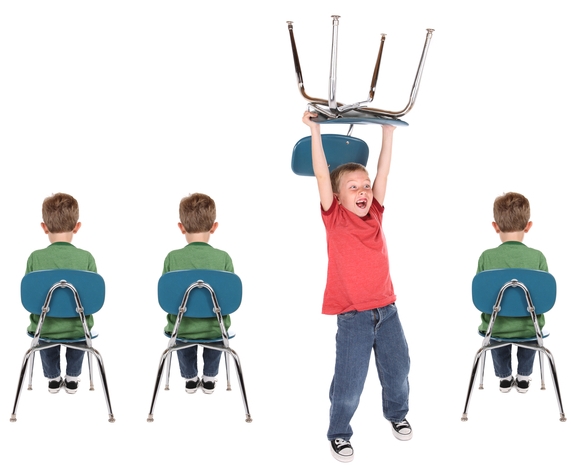Visual learning has been key for me in academics and on the academic front. Visual learning has enabled me to take my passion for rugby to another level. Mapping out guidelines and instructions allow me to not only understand things better, but the information I attain remains available in the long term. – Kevin (ADHD)
Attention Deficit Hyperactive Disorder (ADHD) is a neurobiological disorder that interferes with an individual’s capacity for regulating attention (inattention), activity level (hyperactivity) and impulsive behaviour (impulsivity). ADHD is not always the same for everyone who has it. It can be mild or more severe and it can come in different types. It can present itself in a quiet child or as anxious, over-focused or obsessive. It is not caused by bad parenting or an excuse of “laziness”, “a phase”, or “a dreamer”. ADHD is a chronic condition that persists into adulthood and is 3 times more common in boys than girls. ADHD symptoms may vary from day-to-day or hour to hour, and while an individual may exhibit these symptoms, it is the degree of presentation, the inability to regulate them and a level of impairment that results in a diagnosis. If a child has ADHD it is 5 times more likely that another family member will also have the disorder. (CADDAC)

An individual with ADHD does not have control of their inattention, hyperactivity, and distractibility, which can be very disruptive. Their impulsiveness does not allow them to think of consequence before their thought turns into action. Skills such as hindsight and planning are not their strengths. They may have difficulties with executive function (working memory) affecting their ability in writing, reading comprehension, problem-solving, following directions, monitoring their own progress, evaluating their own strengths and needs, or paying attention and resisting distraction. Due to these behaviours they often have low self-esteem, difficulty with relationships and have a low performance at school or work.


Possible Symptoms of Inattention
- Distracted easily form the task at hand by noises or things going on around them
- Looking around frequently
- Staying focused on one activity
- Daydreaming
- Not focusing on speaker when spoken to
- Unable to remember verbal instructions
- Misinterpreting instructions
- Unable to pay attention to details
- Completing work without being reminded
- Losing things
- Difficulty organizing belongings and work
- Difficulty starting things
- Forgetting normal routines
Possible Symptoms of Hyperactivity
- Fidgeting and squirming
- Problems remaining seated
- Talking excessively and at inappropriate times
- Often running and climbing
- Stands instead of sitting at the table
- Unable to settle into a quiet activity
- Constantly on the go
- Frequently handling or touching objects


Possible Symptoms of Impulsivity
- Butting into conversations
- Blurting out answers in the classroom
- Beginning work before instructions given
- Disturbing others who are playing
- Grabbing others belongings
- Touching, grabbing or hitting others
- Problems waiting for a turn or standing in line
- Making impulsive decisions
Effects of ADHD
- Difficulty regulating attention
- Difficulty with impulsive behaviour
- Becoming easily frustrated
- Problems with short-term memory
- Difficulty with problem-solving
- Difficulty with social skills
- Procrastination
- Problems with time management
- Difficulty getting your work done
- Difficulty planning ahead
- Problems with organization

Some individuals may use medication to treat ADHD. Though medicine can effectively deal with some of the symptoms it does not deal with all the symptoms or cognitive disabilities related to ADHD. By being proactive rather than reactive and using visual aids and strategies an individual with ADHD can be more successful throughout life.
Visual aids and strategies assist an individual with ADHD to organize, focus, understand, express themselves, clarify expectations, modify behaviours and emotions, motivate learning and increase self-esteem. The use of a daily schedule, first/then board, timers, token board and task lists make routines and expectations clear, modify reactions, provide positive reinforcement for desired behaviour(s) and improve communication skills.
Vizually Speaking understands, providing a service to assist the individual, their families and caregivers through designing, creating and implementing individualized visual aids and strategies. Contact us today for a FREE consultation contact us today.
Join the Conversation
Do you have ADHD or are you supporting an individual with ADHD? What is your greatest challenge you face? Leave me a comment here, and join the conversation on Facebook where I asked, “My greatest challenge with ADHD is_____________.”
Workshop Presentation - Visual Aids and Strategies
Contact Vizually Speaking today to learn how Visual Aids and Strategies can decrease the undesired behaviour(s), improve communication, promote independence and increase self-confidence. Through our dynamic presentation you will:
✓ Uncover the importance of using Visual Aids and Strategies.
✓ Discover the benefits of Visual Aids and Strategies.
✓ Learn how to overcome communication barriers.
✓ Promote independence and decrease undesired behaviours.
✓ Be introduced to NEW resources.
EVERYONE benefits from Visual Aids!

Vizually Speaking understands, providing a service to assist the individual, their families and caregivers through designing, creating and implementing individualized visual aids and strategies. Contact us today for a FREE consultation.



